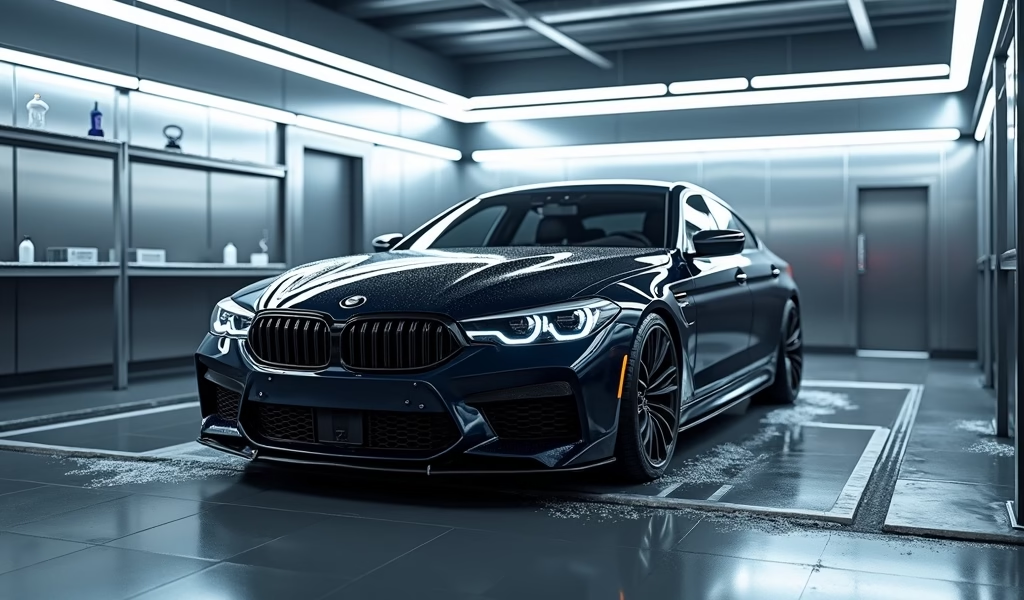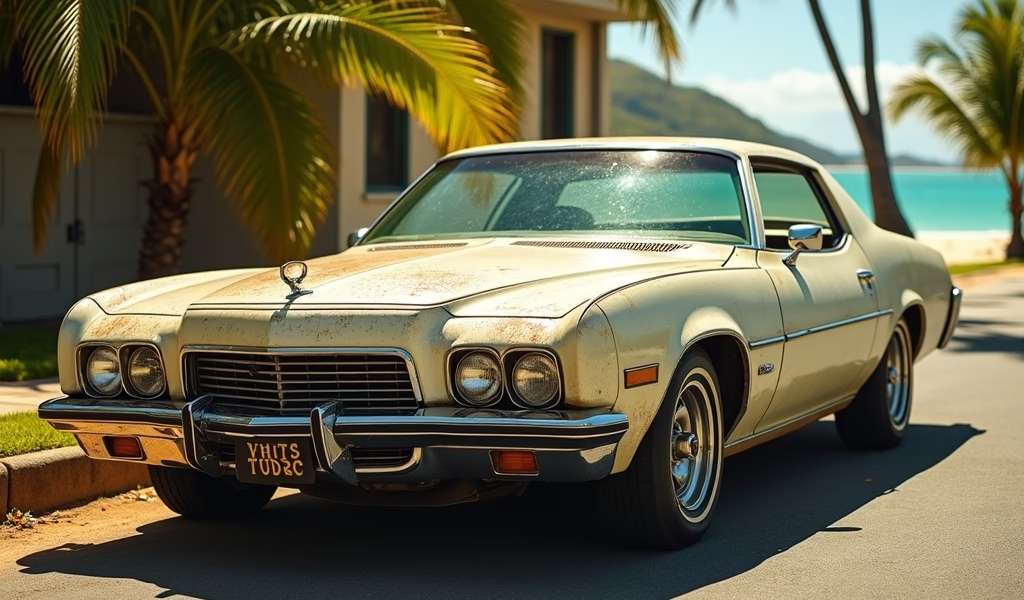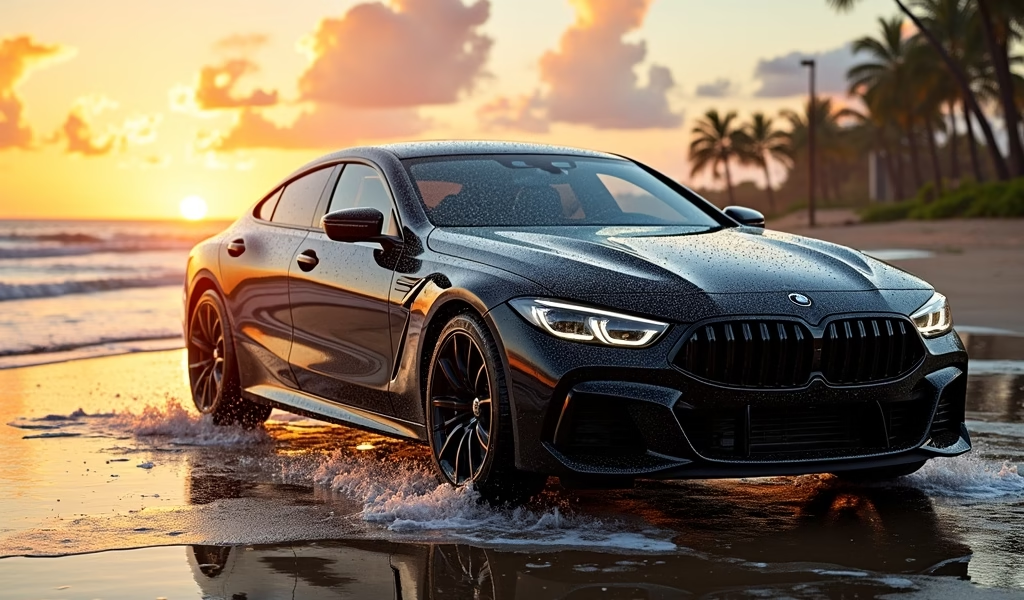Overview
This article provides seven specialized car care tips for Honolulu residents, addressing how Hawaii’s unique environmental challenges—salt air, volcanic ash, intense sun, and mineral-rich rain—require more frequent washing, specific products, and tailored maintenance techniques. The guide covers optimal washing frequency, product selection, DIY techniques, addressing Hawaiian-specific environmental challenges, interior care, and strategies to maintain a fresh appearance longer, emphasizing that proper car care in Hawaii is not just about aesthetics but essential preventative maintenance to protect vehicles from accelerated corrosion and damage.
Table of Contents
- Introduction
- Choosing the Right Car Wash Service for Your Needs
- Optimal Washing Frequency for Honolulu’s Climate
- Best Products for Protecting Against Hawaiian Elements
- DIY Washing Techniques for Honolulu Residents
- Addressing Specific Hawaiian Environmental Challenges
- Interior Car Care in Honolulu’s Climate
- Maintaining That Fresh Wash Look Longer
- Conclusion
- Frequently Asked Questions
Introduction
Hawaii’s paradise setting comes with a price for your vehicle. The combination of salt-laden ocean air, volcanic ash, and intense tropical sun creates the perfect storm for damaging your car’s finish. As someone who’s spent 20 years under the hood and detailing cars across Oahu, I’ve seen firsthand how quickly our unique environment can deteriorate a vehicle’s appearance.
A proper car wash routine in Honolulu isn’t just about keeping up appearances—it’s essential preventative maintenance. The salt air that makes our beaches so refreshing is silently corroding your undercarriage. That stunning sunshine gradually breaks down your paint’s protective layers. Even our famous rain carries minerals that can etch into your clear coat.
I’ve put together these 7 battle-tested tips to help you maintain your vehicle’s shine while protecting it from Hawaii’s beautiful but harsh elements. These strategies come from years of adapting mainland techniques to our unique island conditions. Let’s dive in and keep your ride looking fresh no matter what paradise throws at it.
Choosing the Right Car Wash Service for Your Needs

Not all car washes are created equal, especially in Honolulu where our environmental factors demand specialized approaches. Your choice should balance convenience, thoroughness, and environmental responsibility.
Automated washes provide quick convenience and are fine for regular maintenance. McKinley Car Wash and Hawaii Kai Ultra Shine offer touchless options that reduce the risk of surface scratches. However, they may miss areas where salt and volcanic residue like to hide—behind emblems and inside door jambs.
Hand wash services deliver more thorough cleaning with the human touch that automated systems can’t match. Diamond Head Cove Car Wash and Waikiki Car Wash employ experienced staff who understand our local conditions and pay attention to those easily missed spots. The extra time invested translates to more comprehensive protection against our corrosive environment.
Mobile services like Clean Rides Hawaii and Island Detail bring professional washing to your location. This convenience comes at a premium price but saves your valuable time. Their specialized equipment often includes water reclamation systems that help conserve our island’s resources while giving your car proper attention.
The best car wash prices aren’t always the lowest—consider the value of thorough cleaning that addresses Hawaii-specific issues like salt accumulation and volcanic residue removal. Many local services offer loyalty programs that provide good value for regular customers who understand the importance of consistent maintenance.
Optimal Washing Frequency for Honolulu’s Climate
In Honolulu, washing your car isn’t just a cosmetic choice—it’s preventative maintenance on a schedule dictated by our unique climate patterns. During the dry season (April-October), aim for bi-weekly washes to remove accumulated salt and dust. The lack of natural rain means contaminants sit longer, gradually etching into your paint.
The wet season (November-March) calls for weekly washes despite the regular rainfall. Contrary to mainland logic, our rain often makes things worse by mixing with pollutants and salt before settling on your vehicle. After heavy rain, give your car a quick rinse to remove these mineral-laden droplets before they dry and leave spots.
Your proximity to the ocean should adjust this baseline schedule. If you’re parked within a quarter-mile of the shoreline, increase frequency by 30-50%. The salt concentration is significantly higher in these areas, accelerating corrosion on all metal parts.
Don’t ignore these warning signs that your car needs immediate attention:
- White salt residue (especially near wheel wells and door bottoms)
- Dull, hazy appearance to your paint’s finish
- Visible volcanic ash particles (grayish dust with slightly gritty texture)
- Bird droppings (which can etch paint within hours in our hot sun)
According to a Consumer Reports study, vehicles in coastal environments that receive regular washing can retain up to 30% more resale value over five years. That makes your regular car wash not just maintenance, but a sound financial investment.
Best Products for Protecting Against Hawaiian Elements
The right products can dramatically extend your car’s protection against Hawaii’s environmental assault. For fighting salt air, polymer sealants create an effective barrier between your paint and corrosive elements. Products like 303 Graphene Nano Spray Coating or Meguiar’s Hybrid Ceramic Wax offer superior protection that lasts 3-4 months in our climate—much longer than traditional waxes.
Our intense sunlight demands serious UV protection. Look for products containing carnauba wax for natural UV resistance, or step up to ceramic coatings for longer-lasting protection. These modern formulations bond at the molecular level to your clear coat, creating a sacrificial layer that takes the damage instead of your paint.
For the environmentally conscious, products like Method Car Wash Soap and Bio-Kleen are biodegradable and work effectively even with our mineral-rich water. These eco-friendly options protect our fragile island ecosystem without compromising cleaning power—a win-win for your car and our environment.
A local secret: products containing montan wax show excellent durability in our tropical climate. This natural wax, derived from lignite, often outlasts other waxes by 2-3 weeks in head-to-head testing under Hawaiian conditions. It’s worth seeking out products with this ingredient for maximum protection between washes.
When shopping for wheel and tire cleaners, avoid harsh acid-based products that can accelerate corrosion on our salt-exposed wheels. Instead, choose pH-balanced cleaners specifically designed for alloy wheels. Your tires will also benefit from UV protectants that prevent the dreaded “brown tire” effect common in our intense sunshine.
DIY Washing Techniques for Honolulu Residents
If you’re washing at home, working with Hawaii’s climate rather than against it will save water and improve results. The two-bucket method is essential—one bucket with soapy water and another with clean rinse water to prevent redepositing grit onto your paint. This simple technique prevents microscopic scratching that dulls your finish over time.
Timing matters more than you might think. Wash early morning (before 9am) or late afternoon (after 4pm) to prevent soap from drying too quickly and leaving spots. Our midday heat can evaporate water faster than you can dry it, creating frustrating mineral deposits that require extra work to remove.
For water conservation that respects our island resources:
- Use a pressure washer with an adjustable nozzle to minimize water use
- Collect rainwater during wet months for self-service car washing
- Invest in waterless wash products for quick touch-ups between full washes
Your washing process should follow this sequence for best results:
- Park in shade whenever possible
- Rinse thoroughly to remove loose particles, starting at the roof and working down
- Use two buckets—one for soapy water, one for rinsing your wash mitt
- Wash from top to bottom using straight lines rather than circular motions
- Use separate microfiber mitts for lower panels which collect more road grime
- Rinse thoroughly with filtered water if possible to reduce mineral spots
- Dry immediately with quality microfiber towels, changing to fresh towels as needed
A final pro tip: keep a spray bottle with 50% distilled water and 50% isopropyl alcohol in your trunk. This homemade solution cuts through water spots quickly when you don’t have time for a full wash—perfect after those sudden afternoon showers that pop up unexpectedly.
Addressing Specific Hawaiian Environmental Challenges

Hawaii throws unique challenges at your vehicle that mainland car care advice simply doesn’t cover. When dealing with volcanic ash after vog (volcanic smog) episodes, use a pre-wash treatment of vinegar and water (1:4 ratio) to neutralize the alkaline ash particles before they damage your clear coat. Think of ash as tiny shards of volcanic glass—you want them off your paint immediately.
Salt buildup requires special attention, particularly on undercarriages and in hidden crevices. Monthly undercarriage treatments prevent salt from attacking your car’s structural components. For stubborn salt residue, a solution of distilled white vinegar and water can dissolve deposits without damaging paint. According to research from the National Association of Corrosion Engineers, vehicles in coastal environments experience corrosion rates up to 5 times faster than inland areas.
Our tropical rain carries more minerals than mainland precipitation, leaving noticeable spots when it dries. Keep a quick detailer spray and microfiber cloth in your car to address rain spots immediately—especially after those brief showers that seem to appear from nowhere. Letting these mineral spots bake onto your paint in our hot sun can create permanent etching that requires professional correction.
Red dirt stains, common after upcountry trips, need immediate attention. The iron oxide content in Hawaiian soil can bond to your clear coat if left untreated. Use clay bars or specialized iron removal products to lift these stains before they become permanent. The distinctive red color comes from oxidized iron particles that will continue to “rust” against your paint if not removed properly.
Interior Car Care in Honolulu’s Climate
While exterior care gets most attention, Honolulu’s climate can be equally harsh on interiors. Our intense UV exposure accelerates dashboard cracking and fading. Apply UV protectant products monthly rather than quarterly as mainland schedules suggest. Products with UV inhibitors create a protective barrier against the sun that beats through windshields all year round.
Humidity creates perfect conditions for mold growth, particularly in fabric and under floor mats. Combat this by:
- Using desiccant packets or rechargeable dehumidifiers to reduce moisture
- Leaving windows cracked slightly when parked in secure areas to improve air circulation
- Scheduling professional ozone treatments if musty odors develop
- Cleaning air conditioning systems twice yearly to prevent mold colonization
Leather seats need conditioning every 4-6 weeks in our climate—twice as often as mainland recommendations. Use leather conditioners with UV protection to prevent premature drying and cracking. For fabric upholstery, apply fabric protectors with UV inhibitors and address spills immediately to prevent mold growth in our humid environment.
Don’t overlook your headliner—the cloth ceiling of your car’s interior. In Hawaii’s heat, the adhesive can fail prematurely if the fabric becomes brittle from sun exposure. Apply fabric protectant to this often-forgotten surface to prevent the dreaded headliner sag that’s common in older vehicles here.
A local trick: keep a small container of uncooked rice in a breathable fabric pouch under your seat. This natural desiccant helps absorb excess humidity during those muggy summer months when even air conditioning can’t seem to keep up with the moisture in the air.
Maintaining That Fresh Wash Look Longer
Extend the time between washes with these island-tested strategies. Quick touch-up methods can maintain appearance without full washing. Keep a waterless wash product and microfiber towels in your trunk for spot cleaning. Use detailing spray after light rain to prevent mineral deposits from forming as water evaporates.
Strategic parking makes a substantial difference in maintenance needs. Whenever possible, choose covered parking to minimize exposure to the elements. If unavailable, park away from ocean spray at beaches and avoid parking under trees dropping sap or flowers. Those beautiful plumeria blossoms turn into stubborn yellow stains when they fall on hot car surfaces.
For vehicles parked outdoors regularly, consider investing in a breathable car cover designed specifically for tropical climates. Look for covers with UV protection and moisture-wicking properties that prevent condensation buildup underneath. A quality cover pays for itself by extending the time between washes and protecting against bird droppings, tree sap, and UV damage.
Regular application of quick detailer between washes can extend your protection significantly. These spray-on products contain small amounts of polymers that refresh your existing protection and remove light contamination before it can bond to your paint. They’re perfect for maintaining that just-washed look with minimal effort.
Don’t forget your glass surfaces. Apply rain repellent treatments like Rain-X to windshields and windows monthly. These products cause water to bead and roll off, improving visibility during rain showers and reducing water spots. This small step makes a big difference during our sudden tropical downpours, keeping you safer on the road.
Conclusion
Maintaining your vehicle’s appearance in Honolulu requires a specialized approach that addresses our unique environmental challenges. By choosing the right car wash service, establishing an appropriate washing schedule, using quality products, mastering DIY techniques, addressing specific Hawaiian environmental issues, caring for your interior properly, and implementing strategies to extend that fresh-wash look, you’ll not only keep your car looking its best but also protect its value for years to come.
The extra effort pays dividends beyond mere appearance. A well-maintained vehicle retains significantly more value at trade-in time, experiences fewer mechanical issues related to corrosion, and provides a more pleasant driving experience throughout Hawaii’s diverse microclimates. Whether you’re cruising along Waikiki Beach or heading to the North Shore, your car deserves protection that’s as special as our island paradise.
Remember that consistency matters more than perfection. Even simplified versions of these tips, applied regularly, will yield better results than occasional intensive detailing. Create a maintenance schedule that works with your lifestyle, and your car will reward you with years of trouble-free service and head-turning appearance, even in our challenging tropical environment.
Frequently Asked Questions
How often should I wash my car in Honolulu?
Weekly washing is ideal if you’re near the ocean, while bi-weekly washing is sufficient for inland areas. Increase frequency during vog events or after beach trips to prevent salt and mineral damage.
What’s the best time of day to wash my car in Hawaii?
Early morning (before 9am) or late afternoon (after 4pm) provides optimal conditions for washing. These times prevent soap and water from evaporating too quickly in our intense midday heat.
Are touchless car washes better than brush washes in Honolulu?
Touchless washes are generally preferable as they minimize the risk of microscopic scratching from brushes that might contain volcanic grit. However, they may not clean as thoroughly in crevices where salt likes to accumulate.
How can I remove volcanic ash from my car safely?
Pre-treat with a 1:4 vinegar-water solution to neutralize the alkaline ash, then wash normally without scrubbing dry ash. Never wipe dry ash with a dry cloth as it will scratch your paint like sandpaper.
What’s the best protection against Hawaii’s intense sun?
Ceramic coatings provide the longest-lasting UV protection, lasting 1-5 years depending on quality. For more affordable options, synthetic polymer sealants offer 3-6 months of protection versus traditional waxes that last only 4-6 weeks in our climate.

